No products in the cart.
How to Install Vinyl Plank Flooring
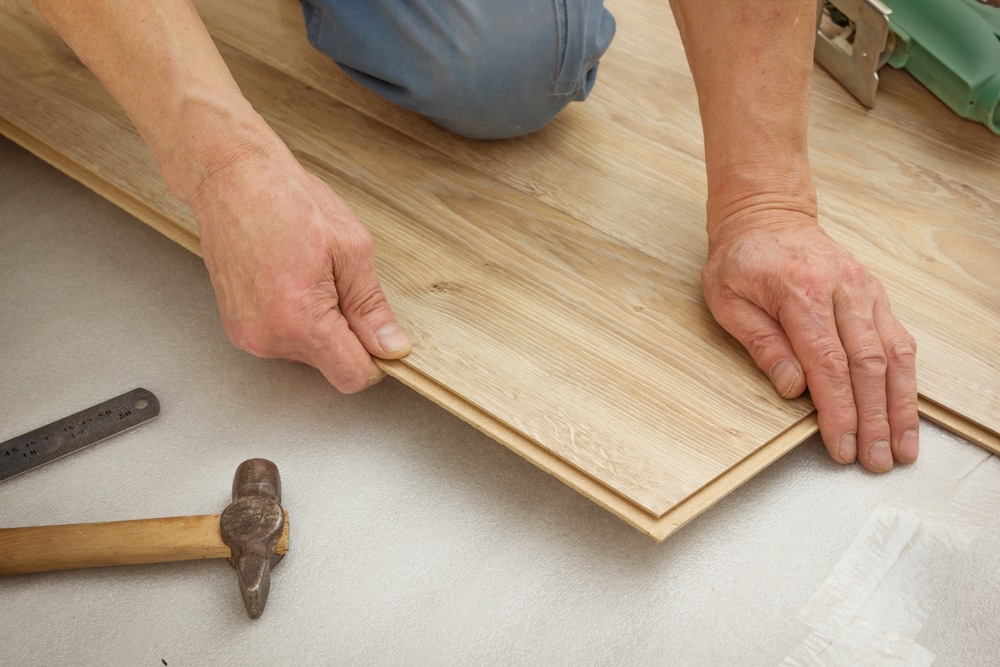 It is nice to know that most projects using vinyl flooring materials produce successful results because plank, tile, and sheet materials are specifically made to be easily installed. They are sturdy, easy to size, and fit sleekly in a room over nearly any imperfect surface like concrete, tile, old hardwood, any other subfloors.
Plank and tile often use tongue-and-groove assembly with click-lock systems to be placed with glue, as a floating floor, or using peel-and-stick adhesive. Cutting sheet vinyl takes practical measuring know-how and a good, sharp blade with or without flooring adhesive on a subfloor.
Many do-it-yourselfers enjoy the simple puzzle-like components of using tiles and planks. A new floor can be completed quickly and efficiently for a pristine finish. Imagine getting a major home upgrade done within a weekend and being able to relish the rewards right away. That’s why they appreciate these helpful vinyl flooring products.
Preparing the subfloor is the first stage of this rewarding endeavor, and the next is ensuring you have all the right tools for the job. These may include:
It is nice to know that most projects using vinyl flooring materials produce successful results because plank, tile, and sheet materials are specifically made to be easily installed. They are sturdy, easy to size, and fit sleekly in a room over nearly any imperfect surface like concrete, tile, old hardwood, any other subfloors.
Plank and tile often use tongue-and-groove assembly with click-lock systems to be placed with glue, as a floating floor, or using peel-and-stick adhesive. Cutting sheet vinyl takes practical measuring know-how and a good, sharp blade with or without flooring adhesive on a subfloor.
Many do-it-yourselfers enjoy the simple puzzle-like components of using tiles and planks. A new floor can be completed quickly and efficiently for a pristine finish. Imagine getting a major home upgrade done within a weekend and being able to relish the rewards right away. That’s why they appreciate these helpful vinyl flooring products.
Preparing the subfloor is the first stage of this rewarding endeavor, and the next is ensuring you have all the right tools for the job. These may include:
- Measuring tape
- Extra-sharp utility knife

- Rubber mallet/hammer
- Tapping block
- Spacers
- Marker
- Level
- T-Square
- Jigsaw
- Finish molding & brad nailer
- Adhesive/glue & grout if using
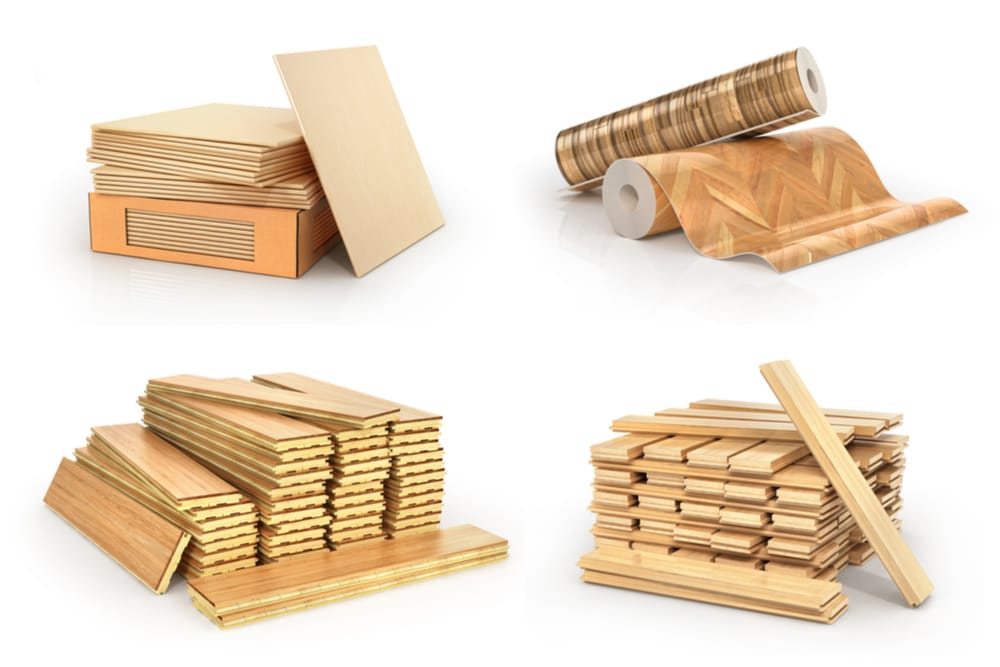
Step 1:
Settle & prepare. You want the tile, plank, or sheeting to settle properly in the room where it will be installed. When you haul each case or box into the area, open it up and let it acclimate for a full day or two. It may need this time to expand or even out which will aid an easier installation.

Step 2:
Concrete moisture test. When installing vinyl over a concrete subfloor, be sure to test it for dampness starting a few days before a planned installation. Glue or use utility tape to fasten down a portion of the vinyl flooring directly to the concrete, and wait 65-75 hours. Pull the vinyl piece up from the floor gingerly, and note that if the tape or glue slides it off easily—there is too much moisture in the concrete. The main concern in this situation is eventual mildew & mold buildup under the vinyl floor. Consider using a vapor barrier between the concrete and vinyl tiles, planks, or sheeting before installing it.
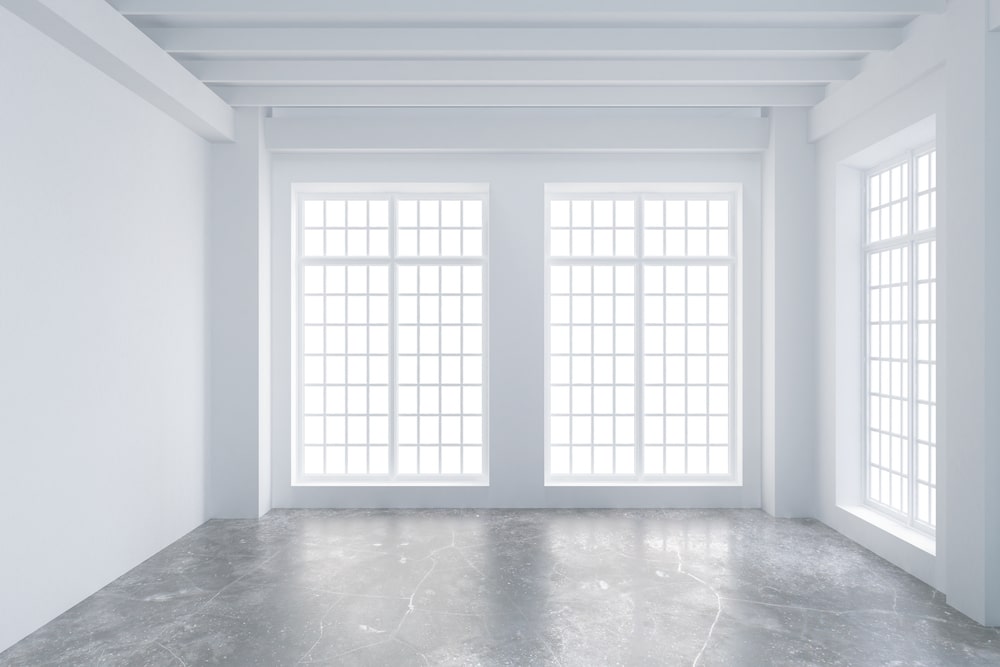
Step 3:
Empty the space. Clearly, any furniture and decor in the room will need to be temporarily relocated before the project starts. Pieces fastened to the floor and immovable (certain bookcases or tubs and vanities in bathrooms) will need to have vinyl cut to fit around them. Toilets and pedestal sinks can be removed temporarily for a better installation result. Sweep and clean the surface to make it ready for action.

Step 4:
Eliminate large surface flaws. If there are any bulbous bumps in the floor, cracks, slopes, or other major disruptions, it’s wise to smooth them as much as possible. While vinyl is often forgiving in covering small imperfections, having an overall level foundation is key to avoiding separation or other floor-integrity challenges. If a concrete or particleboard subfloor has a large protrusion or slant, try to remedy the situation before starting installation. Some issues need patching, mortar, sanding, or other compounds to create a better surface.
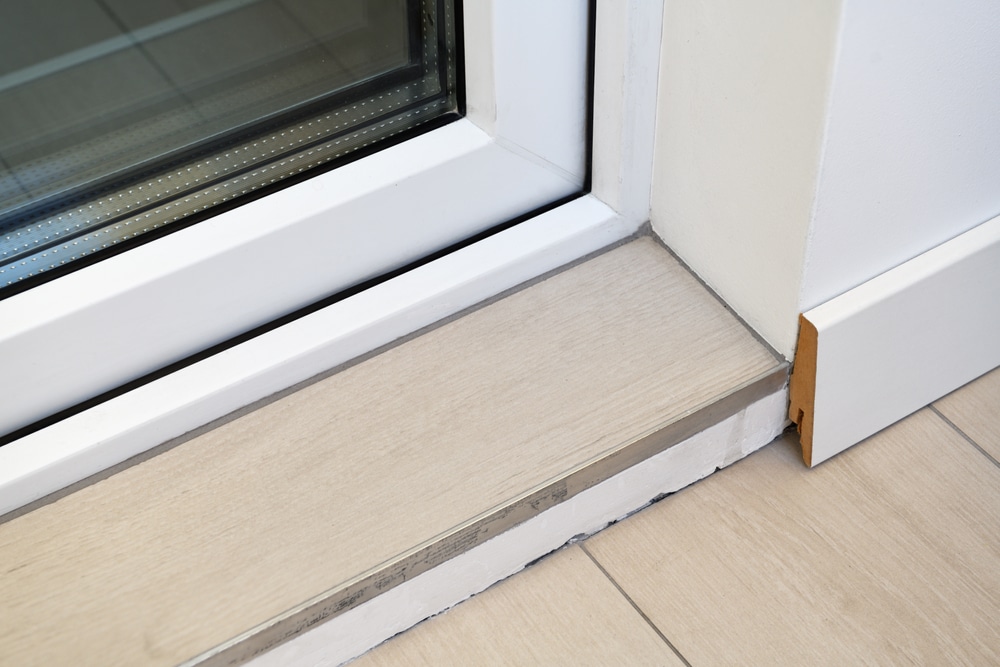
Step 5:
Check door clearance needs. It’s no fun getting a gorgeous floor installed only to notice too late that the door won’t close or gets stuck because the vinyl surface is higher than the needed clearance for a full swing. Before starting the project, carefully measure these heights and remove & sand or trim the door bottom when necessary.

Step 6:
Subfloor readiness. It’s time to really get the canvas ready for the masterpiece. Your subfloor should be swept or vacuumed, scrubbed, and wiped down to eliminate any grit and dust. Leftover dirt or debris can be a hindrance for any glue-down or peel-and-stick vinyl projects. It makes it less effective in its hold and may get worse over time or even create a bump in the surface when the tile settles. If underlayment is part of the project, carefully do so over the pristine, clean subfloor.
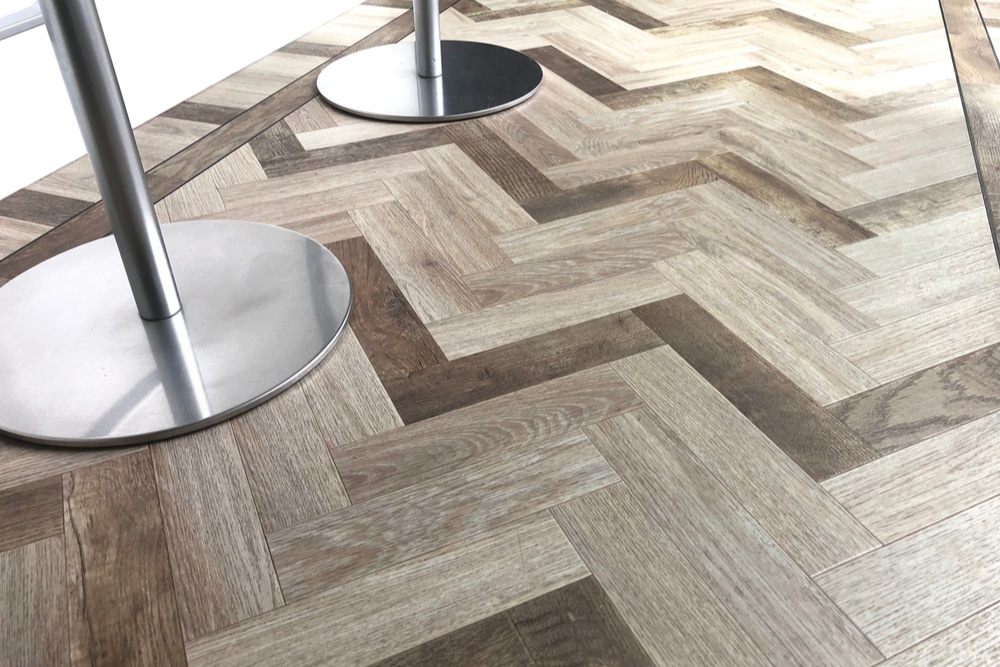
Step 7:
Visualize and plan the layout. It’s important to have a picture in your mind of how you want the pattern to play out on the floor. For example, if you’re installing a striking black-and-white checkerboard pattern, do you want it to be diagonal or straight across the room? For slate-tile-look vinyl tiles, will you make the seams straight or will you stagger them? How do you want the threshold and transitions to look? Physically place the pattern on the floor to get a better idea of how you want the final pattern and placement to look, and how the edges will line up against unique barriers, and you’ll be able to determine how to install the pieces.
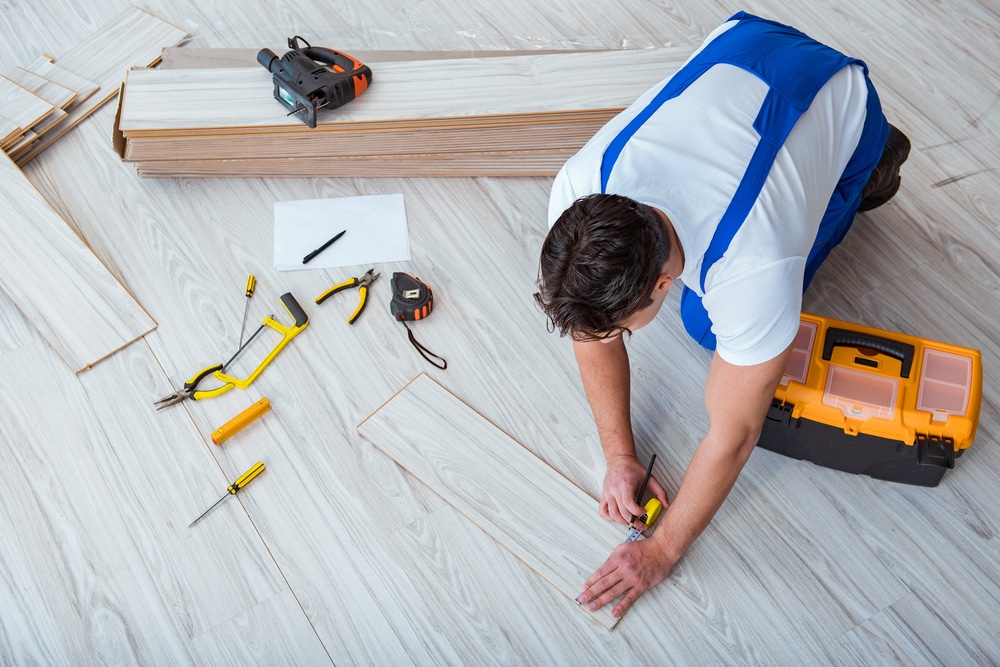
Step 8:
Keep the tools within reach and begin!

Again, depending on the vinyl product you use, you’ll have a few varying methods of sizing, cutting, lining up, and affixing. Vinyl planks and tiles can be scored and snapped when they are trimmed and sized to fit. A straight-edge ruler and sharp utility knife does an excellent job, even if it takes a few swipes to get an effective score groove to snap. Sheet vinyl may take a few swipes to get a clean cut through, as well. Straight edges and new utility blades work well.
It’s a smart idea to mix up your vinyl tiles and planks from their various batches as you go, as this will better blend any color variations between cases. Simply grab one from alternating stacks or boxes as you go. Remember to use spacers to hold a ⅜-inch gap steady along walls when laying peel-and-stick or click-and-lock pieces. Then fit the tongue-and-groove or straight edges neatly together for a tight, flawless look. Those spacers can be used between pieces when you plan on placing grout between ceramic-look tiles, as well. Any grout used should have a 24-hour or more dry-time before walking on it.

The last rows of click-and-lock pieces may need help from a pry bar to place the final tiles or planks. When applying the vinyl with adhesive, roll a 100+ lb. weight over the entire floor for an extra effort toward evening-out the glue as well as helping it stick securely and permanently.
The floor looks incredible when it’s done. At this point, it only needs the finish molding and/or baseboards re-installed to complete the job. A fresh new floor gives the room, and maybe the whole home or office, a brand-new life. Enjoy that fantastic vinyl floor.
Buying
When browsing vinyl floor materials, you’ll notice the various forms include vinyl sheet, composition tile, luxury vinyl tile, and luxury vinyl plank. All are excellent options for a number of settings, with some fitting in more keenly in certain rooms than others. Consider and research the benefits of each to determine which material suits your environment best, then move on to the fun part of selecting a design.
